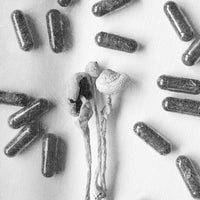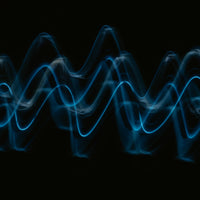Photo by Joshua Sortino on Unsplash.
When someone is having a challenging entheogenic journey, sometimes the gentle touch of another person is all it takes to smooth things out. In light of that, a little supportive physical contact would seem to be an obvious way to help a patient calm down during a turbulent psychedelic therapy session.
There are some legitimate concerns around that, though. For example, a therapist might take the use of “nurturing contact” too far, or a light touch offered with good intention might inadvertently trigger a panic response in a trauma sufferer.
A potential solution to those kinds of issues is a smartphone app-enabled mechanism called the Apollo wearable, which sends a signal resemblant of human touch to the wearer’s wrist or ankle. Its manufacturer, Apollo Neuro, promotes this device as “a wearable hug,” likening the “Apollo Vibes” that it emits (low-frequency sound waves that are felt rather than heard) to “music your body can feel.”
Come On, Feel the Noise
The Apollo is one of many wearables designed to reduce stress and anxiety in various situations. However, as the first of its kind to be tested in clinical psychedelic therapy trials, it’s distinct from devices like the amofit S, the Muse S, TouchPoint, Pulsetto and the Quantum 3. Studies are currently in progress to determine its efficacy in boosting the success of ketamine-assisted therapy for treatment-resistant anxiety and in sustaining remission from PTSD after MDMA-assisted therapy.
Apollo Neuroscience’s cofounder and chief medical officer, Dr. David Rabin, MD, PhD, tells us that using this wearable 15 minutes prior to psychedelic sessions helps patients enter the experience feeling calm and relaxed. Once the session is underway, the client can control the Apollo by pressing its buttons and activating its vibrations. This, Rabin says, restores a sense of control and agency during the journey “as if [the patient] were deep breathing.”
“Part of the way that the Apollo vibrations work is to induce the five-to seven-breaths-per-minute breathing rate that is our natural breathing rate that we enter when we meditate or do biofeedback,” he notes.
Rabin adds that people also use the Apollo after psychedelic sessions to remind themselves of the feeling they had under the influence of the medicine, which helps them integrate those experiences.
What Happens in Vagus
So, what’s the science behind the Apollo’s purported soothing properties? Let’s start with therapeutic touch’s known ability to reduce heart rate, blood pressure and cortisol levels (linked to stress) while cueing the release of oxytocin (aka the “love hormone” or “cuddle chemical”).
To take a slightly broader view, touch appears to relieve stress and induce a sense of calm by decreasing activity in the sympathetic nervous system, which helps manage basic bodily functions in situations of real or perceived danger (aka the “fight or flight” response). At the same time, it activates the parasympathetic nervous system, which oversees those same functions when one is feeling safe and calm (aka the “rest and digest” state).
The sympathetic and parasympathetic nervous systems are branches of the autonomic nervous system (ANS). Among other things, the ANS regulates the amount of variation between heartbeats, the measure of which is known as heart rate variability (HRV).
The advent of wearable heart rate monitors presents an alternative to the use of electrocardiogram data as a means of measuring HRV, which seems to be greater when one is in a relaxed state. Rabin describes HRV measurement as the easiest way to monitor activity in the parasympathetic nervous system. He notes that while most wearables allow one to do this on a week-over-week, month-over-month basis, “Apollo is the first wearable technology that improves heart rate variability just by wearing it. The specific vibration patterns that Apollo delivers to the body were composed based on the neuroscience of how soothing touch naturally improves HRV by activating the vagal nervous system and improving calm and relaxation in the body.”
The vagal nervous system Rabin mentions (alternately known as the vagus nerve) comprises the bulk of the parasympathetic nervous system. Vagal nerve stimulation has been used to mitigate treatment-resistant epilepsy and depression and is now being examined as a potential treatment for conditions like PTSD and cluster headaches.
New Frontiers in Psychedelic Medicine?
In November 2023, Apollo released an AI system in partnership with the ŌURA Ring, a wearable that tracks physical activity and sleep. This program uses data from the ŌURA to create customized vibrations for the wearer throughout the day. Its generative AI is designed to optimize HRV, improve biometrics on ŌURA and regulate wearers’ circadian cycles.
This may open the gates for psychedelic therapists to begin incorporating other wearable health trackers like FitBit and Apple Watch into their practice. As Dylan Beynon, founder of the ketamine therapy company Mindbloom, told Verywell Health, “I think the future of mental health is going to look like having wearable technologies that are actually looking at physical biomarkers—things like respiratory rate, heart rate variability, heart health, cortisol levels, hormone levels, as well as cognitive biomarkers.”
Damon Orion is a writer, musician, artist, and teacher based in Santa Cruz, CA. He has written for Revolver, Guitar World, Spirituality & Health, Classic Rock, High Times and other publications. Read more of his work at damonorion.com.




